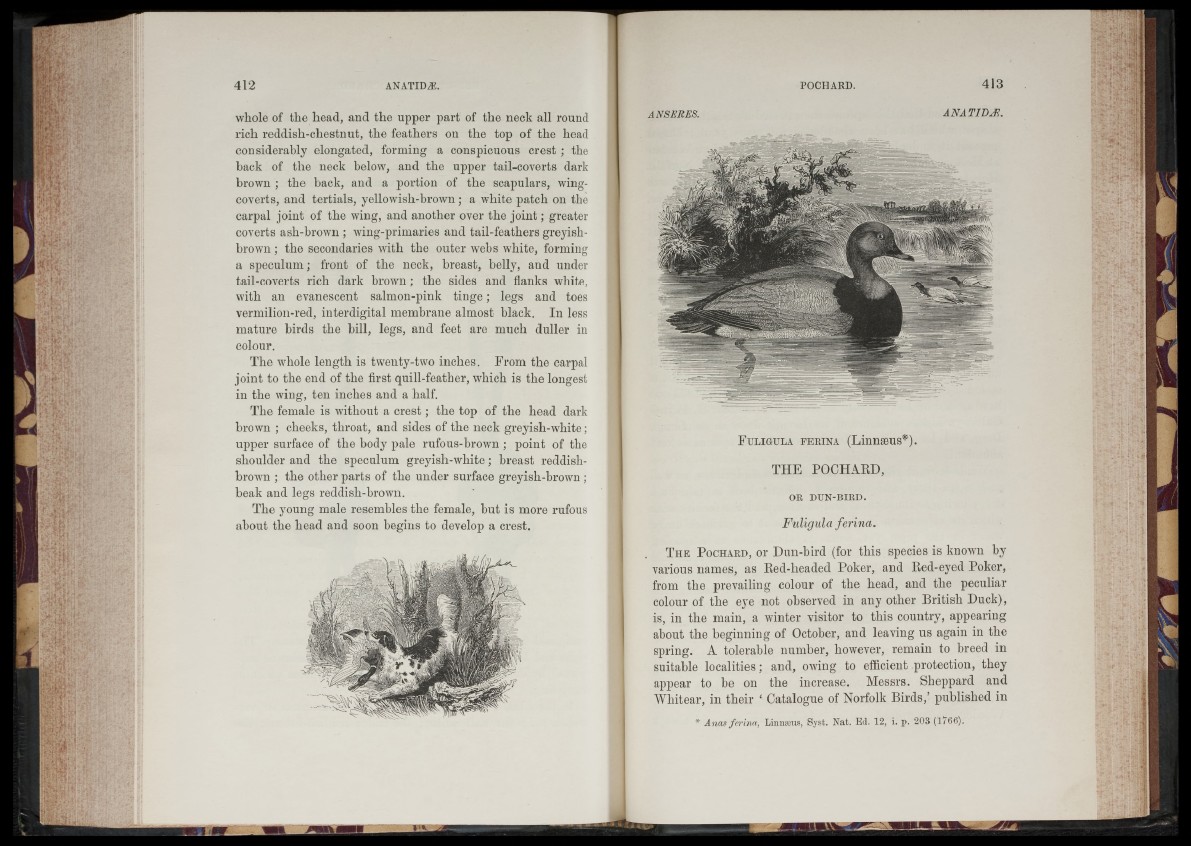
whole of the head, and the upper part of the neck all round
rich reddish-chestnut, the feathers on the top of the head
considerably elongated, forming a conspicuous crest; the
back of the neck below, and the upper tail-coverts dark
brown ; the back, and a portion of the scapulars, wing-
coverts, and tertials, yellowish-brown ; a white patch on the
carpal joint of the wing, and another over the joint; greater
coverts ash-brown ; wing-primaries and tail-feathers greyish-
brown ; the secondaries with the outer webs white, forming
a speculum; front of the neck, breast, belly, and under
tail-coverts rich dark brown ; the sides and flanks white,
with an evanescent salmon-pink tinge; legs and toes
vermilion-red, interdigital membrane almost black. In less
mature birds the bill, legs, and feet are much duller in
colour.
The whole length is twenty-two inches. From the carpal
joint to the end of the first quill-feather, which is the longest
in the wing, ten inches and a half.
The female is without a crest; the top of the head dark
brown ; cheeks, throat, and sides of the neck greyish-white;
upper surface of the body pale rufous-brown ; point of the
shoulder and the speculum greyish-white; breast reddish-
brown ; the other parts of the under surface greyish-brown ;
beak and legs reddish-brown.
The young male resembles the female, but is more rufous
about the head and soon begins to develop a crest.
A NS EKES. A NA TIDAE.
F u l ig u l a f e r in a (Linnaeus*).
THE POCHARD,
OR DUN-BIRD.
Fuligula ferina.
T h e P ochard, or Dun-bird (for this species is known by
various names, as Red-headed Poker, and Red-eyed Poker,
from the prevailing colour of the head, and the peculiar
colour of the eye not observed in any other British Duck),
is, in the main, a winter visitor to this country, appearing
about the beginning of October, and leaving us again in the
spring. A tolerable number, however, remain to breed in
suitable localities; and, owing to efficient protection, they
appear to be on the increase. Messrs. Sheppard and
Wliitear, in their ‘ Catalogue of Norfolk Birds,' published in
* Ana? ferina, Linneeus, Syst. Nat. Ed. 12, i. p. 203 (1*66).